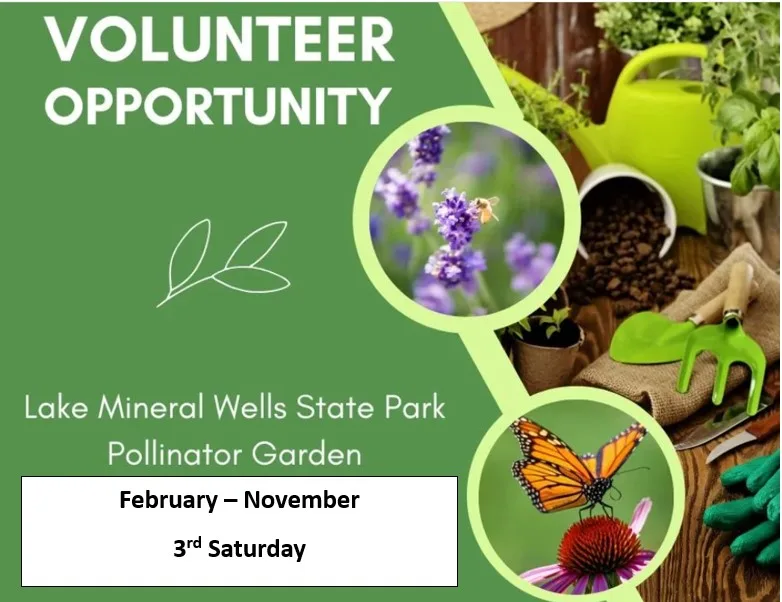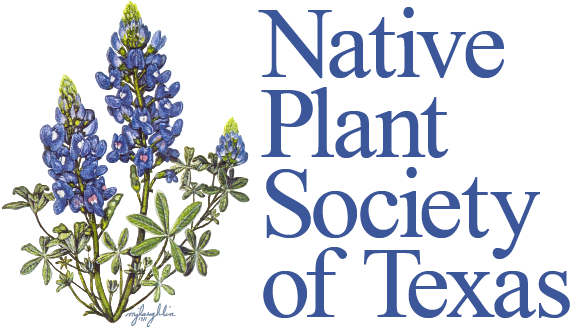This pollinator garden provides visitors the opportunity to see native plants of Texas through all seasons. It is located in front of the Administration Building and parking is available for free (just turn before the entrance gate). This is a joint effort by the Cross Timbers Chapter of the Native Plant Society of Texas, Parker County Master Gardeners, and Texas Parks and Wildlife Department. It provides volunteers with the opportunity to learn more about native plants, pollinators and their required care.
Volunteers are welcome to join on the 3rd Saturday of each month beginning in February through November of each year. Start times are at 10 a.m. in the cooler months and 9 a.m. in the warmer months. If it is below 40 degrees OR raining, the workday will be canceled. February and March are cleanup and prep months, so lots of assistance is needed; and if weather interferes, the event will be rescheduled to the following Saturday.

